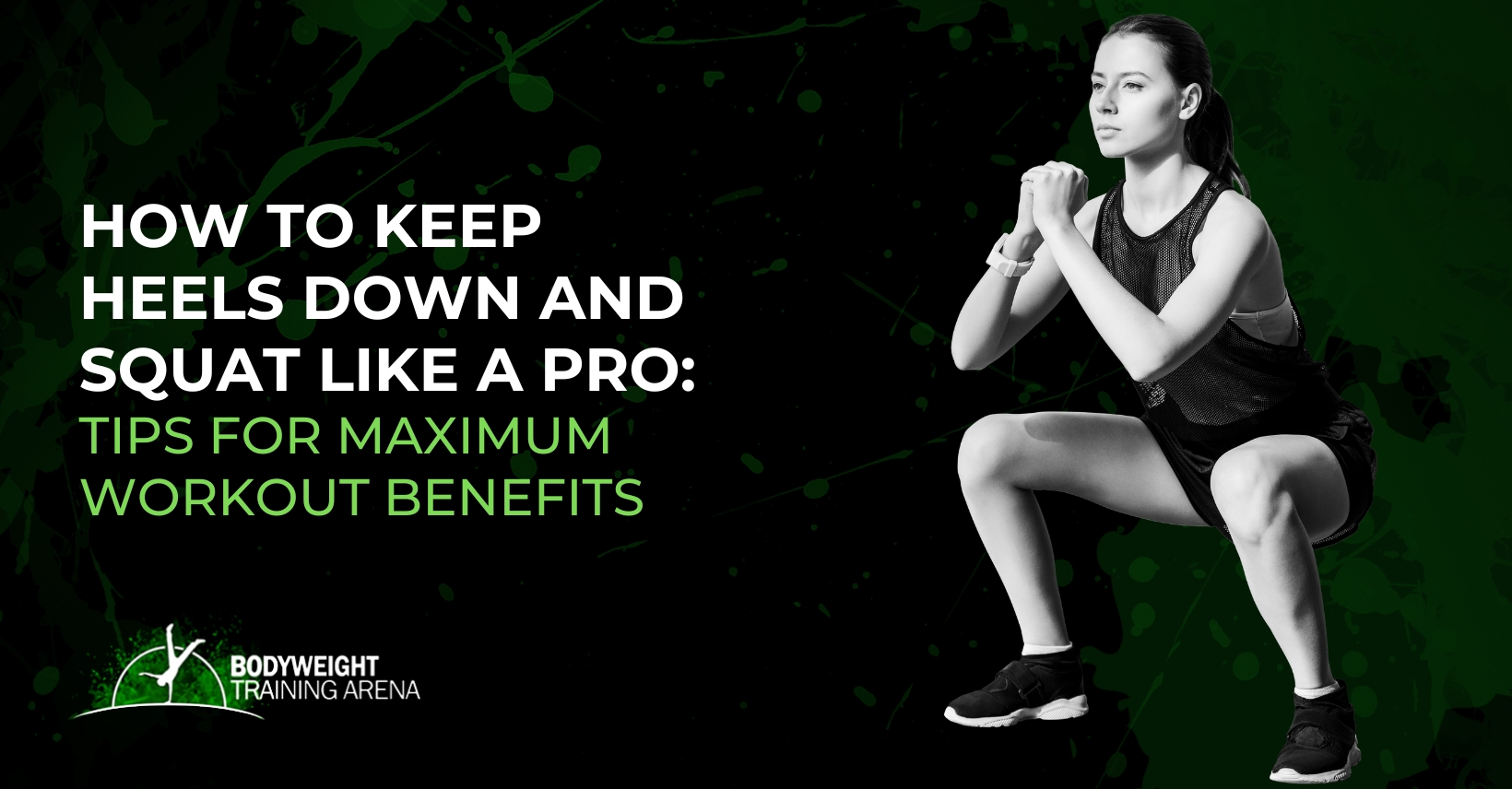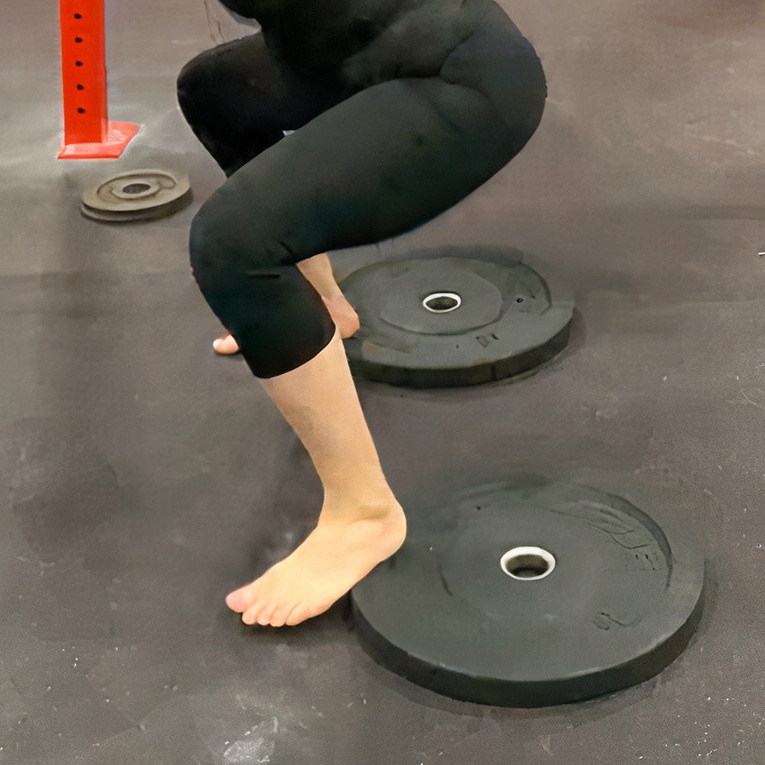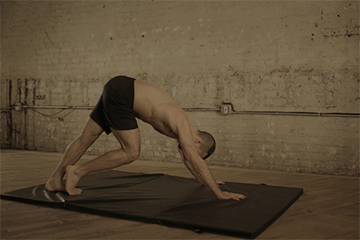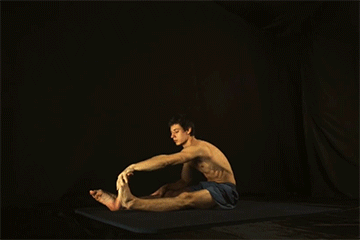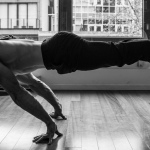Are you feeling frustrated after countless hours of practice yet still struggling with keeping your heels down while doing squats?😤
No need to worry—we’ve all been there!
According to experts, squatting is one of the most effective exercises for improving athletic performance. Performing squats build muscle strength, joint stability, and proper form.
How to keep your heels down while doing squats?
Squats require a proper form to ensure you get the most out of your workout. When performing squats, focus on pressing through your heels and sitting back into the depth of the squat. If you have difficulty keeping your heels down while doing squats, you can try a few techniques to help you.
😱So, how do you keep your heels down while squatting?
Ankle mobility plays a vital role in keeping the heels down during squats. If your ankles are tight, you won’t be able to keep your heels down on the floor. However, there are a couple of simple stretches that can help improve your ankle mobility and help you keep your heels down.
It is important to warm up your ankles and feet before beginning a squat. This will help loosen the muscles and increase flexibility. This can be done with a few simple ankle circles, calf raises, and foot stretches.
Stretching is a great way to increase ankle mobility and help maintain proper form while squatting. Before doing squat repetitions, stretch your legs dynamically with calf raises or ankle circles.
👉In this article, we will discuss in detail how to do a perfect squat and keep those heels down.
✨Overview of the Squat and its Importance in Fitness
✊Squats are one of the most effective exercises for strengthening your core, according to a 2018 study. . It’s a compound exercise that targets multiple muscle groups at once.
It also helps tone the lower body and even promotes fat loss. According to Harvard Medical School, squats, a vigorous strength or weight training exercise, burn approximately 223 calories in 30 minutes.
✊It’s a compound exercise that targets multiple muscle groups at once. It’s a great addition to any fitness program for athletes and non-athletes.
✊Squats can be done with an unloaded barbell, free weights, a weight machine, or even just body weight. It can be done for reps (a set of 10-20 repetitions) or as a single max effort lift (simply one rep at maximum load).
If you are new to squatting, you must learn proper form and technique to take full advantage of all the benefits.
How to know if you’re doing them right? Here’s an article for squat assessment:📍Are you doing it right? The Perfect Squat Assessment
✨The Basics of a Perfect Squat
So, what’s a perfect squat?😎
A perfect squat includes keeping your feet flat on the floor and as close to hip-width apart as possible. In addition, you should look forward with your head, chest up, and back straight throughout the entire motion.
As you descend slowly, you need to ensure that your knees track in line with your toes and do not go beyond them. Your hips should also stay back and down rather than pushing forward, which can stress the lower back.
Pause for a second at the bottom, then push through your heels to drive up. You should feel the tension in your glutes, quads, hamstrings, and core.
A perfect squat comes with practice and patience. If you find it difficult, start with lightweight or simply bodyweight squats and slowly progress to heavier loads.
Related articles that will help you achieve that perfect squat:
- 📍The 6 Golden Rules for achieving the perfect squat
- 📍Revealing the secret to perfect squatting
- 📍7 Simple Tips & Tricks to Perfect Your One-Legged Squat with Momir Iseni
🤔Why do heels rise during the squat?
Heels rising during squats is a common problem faced by beginner and experienced athletes.
The heels rising during the squat puts undue strain on the knees and can lead to injury.
Here are 6 primary reasons why those heels rise during the squat:
✅Lack of ankle mobility
A lack of ankle stability can cause your feet and heels to move around, resulting in an unstable base from which to squat. This instability can cause your heels to rise off the ground.
✅Weak hip muscles
Weak hip extensors can make it hard to keep your hips low and back, causing you to shift your weight forward and onto your toes as you squat down. This can put extra strain on your knees and lead to heel lifts.
✅Wearing the wrong shoes
Your shoes play a significant role when squatting. Wearing the wrong type of shoe can cause your heels to rise, as it does not provide adequate support and stability. Make sure you wear flat-soled shoes with good arch support or Olympic lifting shoes for squats.
✅Improper posture
Poor posture during the squat can cause your heels to rise and strain the knees excessively. Make sure you lead with your chest, keep your core tight, and maintain a neutral spine throughout the entire motion.
✅Poor squat depth
Partial squats are a common cause of heel rise. Going too shallow will force you to shift your weight to the balls of your feet, leading to instability and heel lifts. Make sure you reach full depth for each rep.
✅Wrong foot position
It’s essential to keep your feet flat on the floor, as close to hip-width apart as possible. Pointing your toes inward or outward can create an unstable base and cause extra knee strain.
🔥The Importance of Keeping Your Heels Down When Squatting
Keeping your heels down allows you to engage all the necessary muscles, including the glutes, hamstrings, quads, and core.
If you let your heels come up off the floor, it can cause many problems. This includes stressing your lower back, knees, ankles, and feet. It can also reduce the tension in the muscles that should be working during the movement.
The most important thing to remember is to keep your weight in your heels as you squat, allowing you to engage them throughout the movement.
Next is to ensure your form is correct and avoid arching your back throughout the exercise. When you lower down into the squat, keep your shoulders pulled back and your chest up. This will help ensure good form and create a stable base that allows you to engage your heels effectively.
Finally, some specific exercises and stretches can help target the muscles involved in squatting and make it easier to keep your heels down. This includes calf stretches, peddles, gastroc stretches, single leg raises stretches, and downward dog legs bent.
🏆The benefits of getting your feet flat during a squat include the following:
💯Prevent Imbalance and muscle fatigue
Keeping your heels down helps to ensure that the squat load is distributed evenly throughout the body, helping to prevent any imbalances and muscle fatigue. This allows you to lift heavier weights and gain more strength safely.
💯Engage glutes and hamstrings
When your heels are down, it allows you to engage better the glutes and hamstrings, two key muscles in the squat. This helps to improve your balance, stability, and power output during the exercise. In addition, you can lift heavier weights with better form and technique by engaging these muscles.
💯Reduce Risk of Injury
Keeping your heels down will help you maintain proper form and technique throughout the entire movement, which helps to reduce the risk of injury. It can also help reduce joint stress, allowing you to lift heavier weights with less chance of injury.
💯Efficient transfer of power
When your heels are down, it also allows for a more efficient transfer of power from the lower body to the upper body when coming out of the bottom position. This can help you lift more weight and build more strength.
✨Modify and Stretch
Modifying and stretching to keep your heels down during a squat is essential. These will allow you to keep your heels down while maintaining proper posture and form.
⚡️Modify
Several modifications can help keep your heels down during a squat. Here are some you can try:
- Use a plate
Take those plates you usually put on the bar and place them under your heels. This will give you something to press against, allowing you to engage your heels and keep them down. Put your heels on plates and your toes on the floor to ensure control and balance during the squat.
- Shorten your stance
Reduce the distance between your feet by shortening your stance. This will help to keep your heels down and ensure proper control as you squat.
- Use a resistance band.
Loop a resistance band around your feet and pull it towards your knees. This will act as an anchor, helping you to keep your heels down during the squat.
⚡️Stretch
Stretching is also crucial for keeping your heels down during a squat. Be sure to stretch your calves, hamstrings, and quads to improve your mobility and flexibility. This will help you maintain proper balance and form as you squat, allowing you to engage your heels throughout the movement.
- ✔️Downward dog
The downward dog stretch is a popular and effective exercise for improving flexibility. Begin in a plank position and press your hips back, forming an inverted V shape with your body. Hold the stretch for 30 seconds to one minute before releasing. This will help to stretch out your calves and hamstrings, making it easier to keep your heels down during a squat.
- ✔️Achilles stretch
This stretch focuses on the Achilles tendon, which can be tight for many people and may contribute to difficulty engaging the heels during a squat. To perform this stretch, stand facing a wall with one foot forward and the other back. Bend your front knee until you feel a stretching sensation in your calf before releasing. Repeat with each side for 30 seconds to a minute.
- ✔️Peddles
Peddles are a great way to strengthen and activate your feet. They can help improve coordination, balance, and proprioception, allowing you to engage your heels during a squat better. To perform this exercise, stand with your feet shoulder-width apart while holding the ends of an elastic band in each hand. Next, lift one foot off the ground, bend the knee, and draw small circles with the foot while keeping tension on the band.
- ✔️Gastroc stretches
Gastroc stretches are a great way to improve the range of motion in your lower body. To perform this stretch, stand with your feet shoulder-width apart and bend one knee slightly. Next, lean forward and press the heel of that leg into the floor, feeling a mild stretching sensation in your calf before releasing. Repeat on both sides for 30 seconds to a minute.
- ✔️Single leg raise stretch
This exercise helps to improve flexibility and control in the entire lower body. Begin by standing on one leg with your knee slightly bent. Next, rise onto your toes, then slowly lower back down. This will help to stretch out your hips, quads, and calves, allowing you to keep your heels down during a squat.
- ✔️Downward dog legs bent.
This variation of the downward dog stretch is specifically designed to help keep your heels down during a squat. From a downward bent position, bend both legs and press the heels into the floor. Hold the stretch for 30 seconds to one minute before releasing. This will help to open up your hips, quads, and calves, allowing you to keep your heels down during a squat.
By making modifications and stretching, you can help to improve your form making it easier to keep your heels down during a squat. Remember to practice these exercises regularly, and you should notice an improvement in your squats. You can ensure proper form and get the most out of this classic exercise with improved balance and control.
🧐Frequently Asked Questions
🔎What muscles need to be activated when keeping your heels down during a squat?
The glutes, quads, calves, hamstrings, and core muscles must be engaged while performing a squat in proper form to ensure the feet remain firmly planted on the ground.
🔎How can I ensure my form is correct while doing squats?
Make sure you keep your chest up and shoulders pulled back throughout the exercise, and remember not to arch your back, as this will reduce stability at the hips. Additionally, focus on engaging each muscle group involved in the movement by pushing through your heels and maintaining an upright posture.
🔎Is there any particular footwear best for keeping my heels down during squats?
Shoes with a flat sole, such as running shoes or cross trainers, help provide stability from heel to toe, allowing users to engage their entire foot more effectively while ensuring proper balance throughout each set of every set. Avoid wearing anything too thin or high-heeled, as these can cause instability when trying to maintain good form while performing squats correctly!
🔎Is there any way I can modify my movements if it’s challenging to keep my heels down during squats?
If it’s too challenging to maintain proper form while doing a traditional squat, you can modify the exercise by using a stability ball or box to provide additional support and balance. Additionally, you can use bands or therabands for added resistance to help engage the muscles further and ensure proper form is maintained throughout each rep.
🔎What other exercises can help me stay balanced during movements?
Exercises such as lunges, single leg raise stretches, a downward dog with legs bent, bird dog core stability, and gastroc stretches can all be used to increase balance and core stability while performing complex movements such as squats. In addition, these exercises help open up the hips, quads, and calves, providing a firmer foundation when performing any squat exercise.
🔎How can I improve my balance when doing squats?
Single-leg exercises like lunges and calf raises can help increase your core strength and stability. Additionally, trying different variations of the squat, such as wider stances or box squats, may help to make the exercise easier on the heel.
🔎Is it important for me to use a full range of motion when doing squats?
Yes, a full range of motion is essential for ensuring optimal results with any type of exercise. This includes maintaining an upright posture throughout the entire movement while pushing through your heels as you reach down into each rep.
🔎What should I do if my ankles feel weak during squats?
If you experience ankle discomfort while performing the exercises, try using extra cushioning or arch supports in your shoes to provide additional support and stabilization around this joint area. Also, ensure that you wear appropriate footwear with good traction to maintain proper form while reducing strain on these joints.
🔎How can I improve my balance when doing squats?
Single-leg exercises like lunges and calf raises can help increase your core strength and stability. Additionally, trying different variations of the squat, such as wider stances or box squats, may help to make the exercise easier on the heel.
🔎Why can’t I put my heels down while squatting?
The difficulty in putting your heels down while squatting may be due to a lack of stability and strength, particularly in the ankle area. It is essential to engage each muscle group involved in the movement by pushing through the heels, maintaining an upright posture, and using proper cushioning or arch supports when necessary. Additionally, you can use bands or therabands for added resistance to help engage the muscles further and ensure proper form is maintained throughout each rep.
🔎Why do people put their heels on plates when squatting?
People sometimes put their heels on plates when squatting to help reduce the stress and load on their feet, ankles, and hips by providing an elevated platform. This also helps to keep the feet in a neutral position so that they remain balanced throughout the move while ensuring the proper form is maintained as they squat down. Placing your heels on plates also increases stability and helps provide a better range of motion for deeper squats. Additionally, this can be useful for helping those with limited ankle mobility by allowing them to perform pain-free squats.
🔎Is there equipment to help me keep my heels down while squatting?
Yes, there is equipment that can help you keep your heels down while squatting. This can include weightlifting shoes that offer extra support and cushioning around the ankles or special flat plates with raised bumps to help grip the ground better. Additionally, stretching bands attached to a fixed point in front of you can provide additional resistance and reduce strain on the feet and ankles. Another option is using a resistance band or therabands looped around your calves which will challenge your balance and make it easier for your heels to stay planted when performing squats.
📍Takeaway
Keeping your heels down during squats is essential for good form and maximizing the benefits of the exercise.
There are many reasons why your heels keep rising during squats. Poor ankle mobility, weak hip muscles, and not wearing the right shoes for the routine are some of the possible causes.
If you experience difficulty with this, you can modify your routine and do stretching to help keep those heels down.
Placing your heels on plates can increase stability and range of motion for deeper squats and help those with limited ankle mobility. Stretching exercises like downward dog and Achilles stretch can help to increase your core strength and stability, making it easier to get those heels down during squats.
Do you want a customized routine to help you attain your fitness goal? Take your assessment now from The Movement Athlete. After signing up and downloading the app, you can get a detailed, personalized training plan, including recommendations and workouts that you can use right way.

